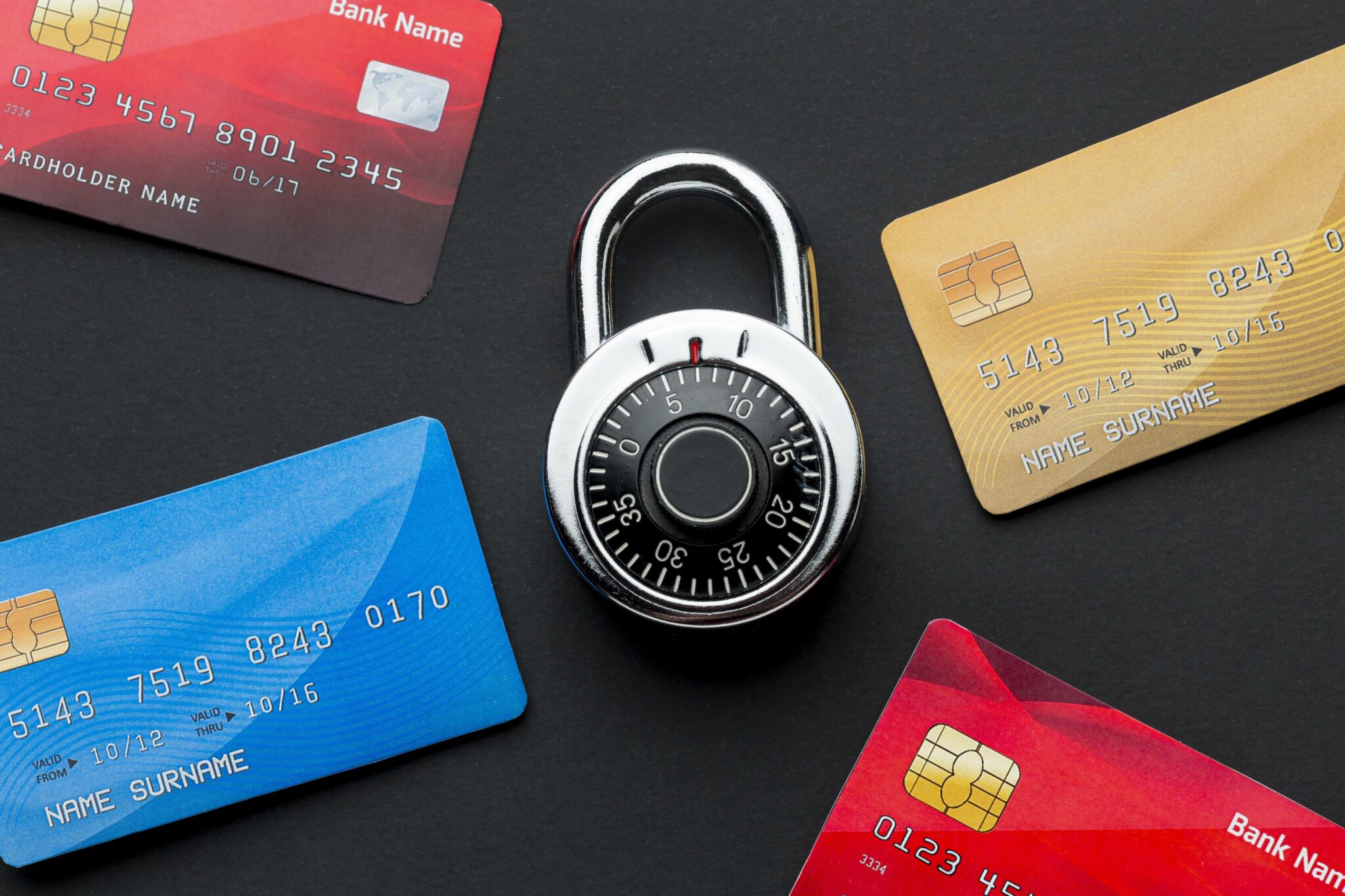What are the differences between debit cards and credit cards and why is it important for you to know them?
Credit bureaus, prepaid cards, checking accounts – if any (or all) of these terms are giving you trouble, you’ve come to the right place. Today, we’re finally answering what are the differences between debit cards and credit cards, how they work, and things to consider before getting either. Let’s get into it.
What Are Credit Cards?
Credit cards are issued by a financial institution and allow the cardholders to borrow funds from that institution. For those services and more, cardholders agree to pay the money they’ve borrowed back with interest.
There are different types of categories credit cards fall into, including:
- Standard Cards: Extend a line of credit to users for making purchases, cash advances, or balance transfers. They often have no annual fee.
- Premium Cards: Offer perks including airport lounge access, concierge services, and access to special events. They often have higher annual fees.
- Rewards Cards: Offer travel points, cash back, or other benefits, depending on how customers spend.
- Balance Transfer Cards: Have low introductory interest rates and fees on balance transfers from different cards.
- Secured Credit Cards: Require an initial cash deposit, which is held as collateral by the issuer.
- Charge Cards: Often don’t allow unpaid balances to carry over from one month to the next. Have no preset spending limit.
Cardholders can get cash, discounts, travel points, and a variety of other perks, which aren’t available to those with debit cards. These perks and rewards can be applied either at tiered rates or on a flat-rate basis.
How Credit Cards Work
Instead of being linked to a bank account like debit cards, credit cards have a line of credit that the user can borrow against. The line typically has a certain preset limit.
Financial institutions charge interest rates on the money the cardholder borrows. However, cardholders can often avoid paying that interest if they pay back their full balance within the card’s grace period.
Pros and Cons of Using Credit Cards
When answering what are the differences between debit cards and credit cards, it’s important to know that the latter offers some pros that the former doesn’t – and vice versa. For example, credit card use is reflected in a credit report. That includes all positive and negative history, like payments, credit utilization ratios, and more.
Also, some credit cards offer additional warranties or insurance on purchased items that go beyond the retailer. They can even offer fraud protection when a customer reports a loss or theft promptly.
However, there are certain disadvantages when it comes to using credit cards. As we mentioned, every action has either a positive or negative impact that goes into the credit report. Misusing credit cards could hurt your credit history and lower your FICO scores.
Also, excessive spending of funds that aren’t yours can lead to debt and the interest rates and fees can easily rack up.
What Are Debit Cards?
Debit cards are essentially payment cards that make payments by deducting money directly from a user’s account. They offer the convenience of credit cards and, when issued by larger financial institutions like Visa or Mastercard, offer the same amount of consumer protection.
In addition to the standard debit cards, which are tied to a bank account, there are two types that aren’t. Electronic benefits transfer (EBT) cards are issued by federal or state agencies and allow qualifying users to use their benefits to make purchases. Also, there are prepaid debit cards, which allow people to make electronic purchases to the amount that was preloaded into an account.
How Debit Cards Work
Banks or financial institutions issue debit cards to their customers so that they can obtain cash or make purchases without having to write paper checks or go to a teller. The cards can be linked to checking or savings accounts.
With debit cards, cardholders can withdraw funds from ATMs, and make purchases online and in-store. When cardholders use their debit cards in a transaction, the money comes out of the linked account either immediately or after a short interval.
Pros and Cons of Using Debit Cards
Just like credit cards, debit cards have their own unique sets of advantages and drawbacks. One of the biggest benefits of using a debit card is that it can help avoid the danger of racking up debt. With debit cards, impulsive spenders aren’t able to spend more than they have.
Also, credit cards were thought of as being more secure than debit cards, but those days are long gone. Nowadays, debit cards are starting to offer more of the protections that credit card users enjoy. But like with credit, it’s important to report fraud or theft as soon as you realize that it has occurred.
Another benefit that debit cards have over credit cards is that they don’t incur annual fees. There are no fees for withdrawing cash, only for maintaining the account.
That said, with debit cards, users can’t earn any rewards unless they have a rewards checking account. But most importantly, debit cards don’t build credit. Using debit cards won’t demonstrate to lenders that you can responsibly pay the money that you’ve borrowed.
What Are the Differences Between Debit Cards and Credit Cards
Along the way, we’ve discussed how credit and debit cards work and which purposes they serve. But now, let’s answer what are the differences between debit cards and credit cards.
As you’ve probably figured out by now, there are numerous key differences between the two.
The first and biggest difference is in the money being used for transactions. While debit cards are typically linked to accounts, users can only spend what’s on those cards and nothing more. On the other hand, with credit cards, users borrow against a line of credit provided by the card issuer.
The other big difference is in the fact that only credit cards can build credit because debit cards can’t affect your credit score. Your credit score is supplied to credit bureaus by different creditors, including credit card issuers.
Another way credit and debit differ is that the latter doesn’t charge interest because users aren’t borrowing money.
Final Thoughts
If you find making decisions difficult, you’re likely struggling to figure out what you need – debit or credit. Hopefully, now that we’ve answered what are the differences between debit cards and credit cards, you’ll be able to make a more informed choice.
If your goal is to allow your kids to be more financially independent while avoiding debt, consider a prepaid debit card, like the BusyKid Spend Card*. With the BusyKid Spend Card, your kids will have the freedom, convenience, and security you and your family are looking for.
To get started and explore all the potential benefits, download the BusyKid app!
* BusyKid Spend Card is issued by MVB Bank, Inc., Member FDIC, pursuant to a license from Visa®️ USA Inc. Cliq® is registered ISO/MSP of MVB Bank, Inc. All cardholders funds are insured by the FDIC in accordance with the FDIC’s applicable terms and conditions. For more information about your card terms and conditions including the VISA Zero Liability policy go here. Cliq®️️ is registered ISO/MSP of MVB Bank, Inc.














